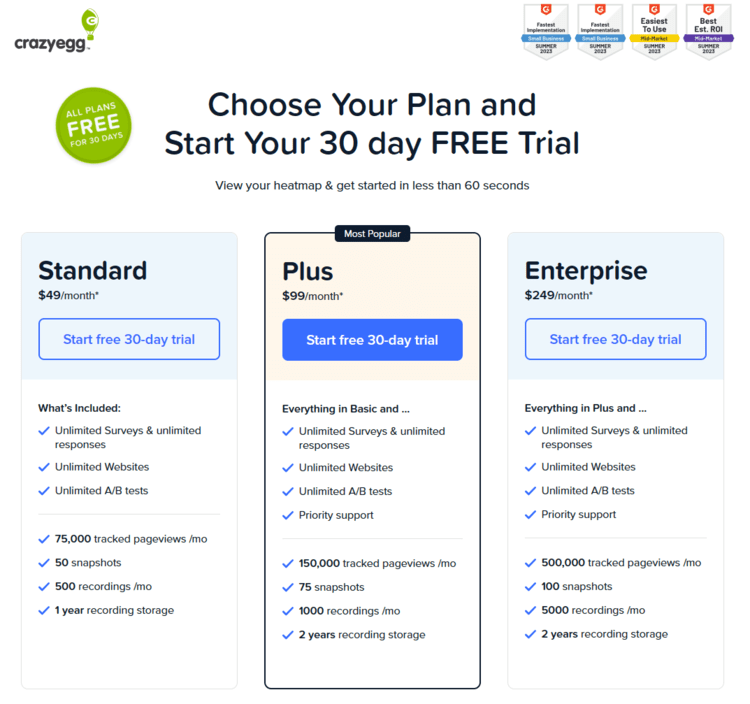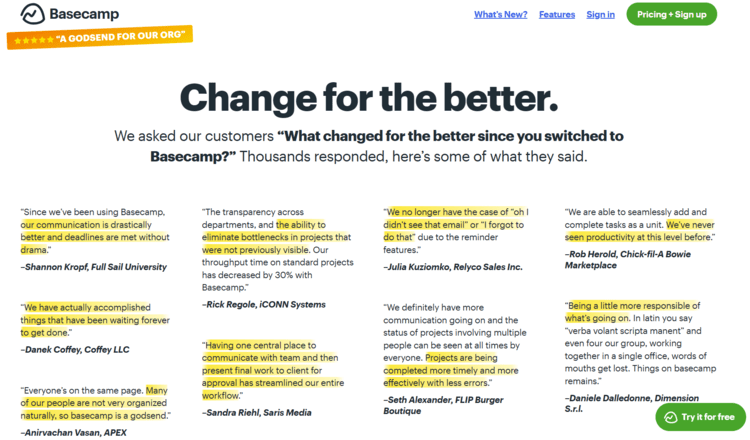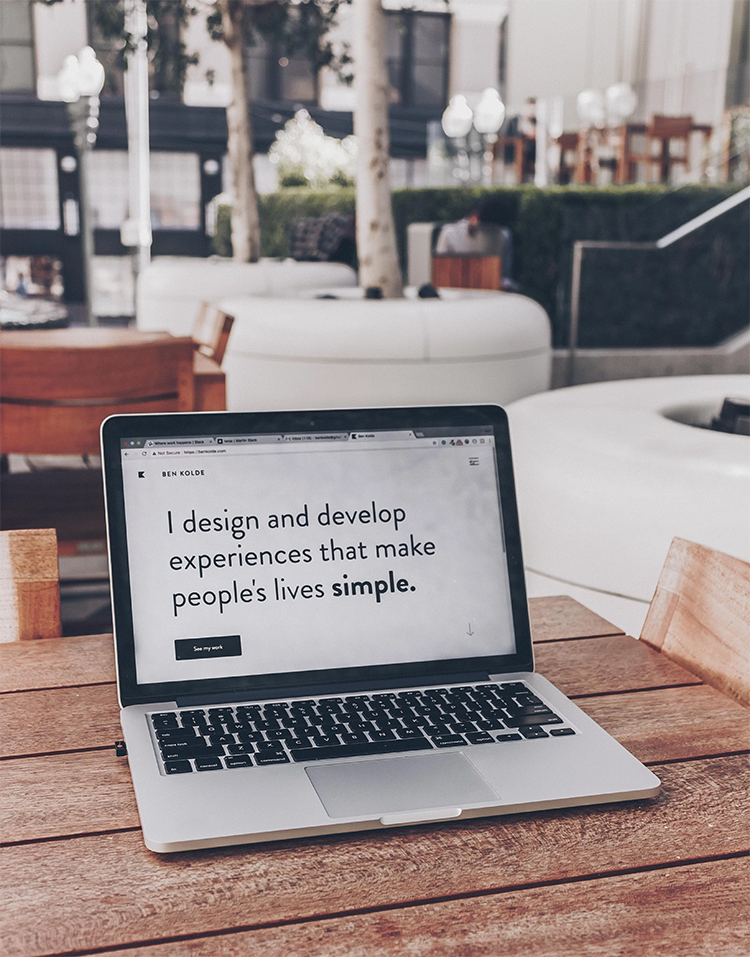As regular consumers, we know firsthand what the decision process is like when buying products and/or services.
We want to know exactly what we’re getting. So in addition to reading the product description, we sift through the reviews, testimonials, and thoughts/comments of previous purchasers.
In fact, around 70% of consumers rely on customer reviews before making a purchase.
By doing our research, we feel more confident in our purchases and are more likely to share with others our shopping experiences.
It’s the customer reviews, or social proof, that builds trust in the customer/brand relationship.
For instance, a study from BrightLocal found that 73% of consumers said that positive reviews make them trust a company more.
And that is key when it comes to building your sales funnels — remember, the more social proof you have in a sales funnel, the easier the sale can be.
Now that you see the power of customer reviews and customer testimonials, where do you begin when it comes to social proof marketing?
In this article, we’ll discuss what exactly is social proof, best practices and why it plays a vital role to your sales funnel strategy.
What is Social Proof?

Coined by Dr. Robert Cialdini, social proof is a phenomenon in psychology where people imitate the behaviors of others in similar social situations.
We do it all the time in unfamiliar settings.
Why? Because we believe that those in our surroundings know more about the current, unfamiliar situation than we do. We look to their actions and trust it.
This social influence is still seen in today’s marketing tactics. Like we mentioned at the beginning, most of our buying habits are based off of social proof.
Amazon reviews of a phone charger or the testimonial of a CEO of a Fortune 500 company about a certain business product are examples of social proofs.
These proofs show you similar people in your buying situation and how it positively or negatively impacted them.
And this social proof is what ultimately builds validity for a business and helps spread the word, organically, about their products or services.
What are the Different Types of Social Proofs?

According to Buffer, there are six types of social proofs. They include: “wisdom of your friends,” “wisdom of the crowd,” user social proof, celebrity social proof, expert social proof, and certification social proof.
“Wisdom of your friends” social proof is exactly what it sounds like. It’s the personal feedback of those close to you.
For the majority, this is the most influential social proof you can get, because we have an inherent trust with our friends, family, and significant others.
Although businesses can’t exactly replicate this type of social proof, they can at least aim in creating organic brand ambassadors.
“Wisdom of the crowd” is also exactly what it sounds like. It’s the feedback of a large group of people, such as a restaurant listing its most popular dish.
This can wield a larger power of persuasion than polling one person leaving the same restaurant.
This type of social proof has grown in the last 20 or so years as many websites, such as Wikipedia and Quora, have grown in popularity and function on getting a large number of answers and opinions.
As for user social proof, think of the reviews you scroll through before you hit add to cart.
Created by everyday users, these reviews and testimonials can be found on a company’s landing page, product page, or shared on social media platforms.
Celebrity social proof is the review or testimonial made by someone with a celebrity status. Not only are they giving their feedback, but they are specifically promoting and endorsing a product.
Again, their reviews can usually be found on a landing page as well as posted to social media accounts. Same goes for an expert social proof, except they’re an expert in an industry that endorses the product or services.
Lastly, certification social proof is when reviews are validated from a third party entity, to vouch for the product.
Think of Inc.com’s Best Workplaces list that come out every year. From there, organizations on the list can place the certification badge back on their homepage.
Why Social Proof is Key to Your Sales Funnels

Now that you understand what a social proof is, why is this important when it comes to your sales funnels?
For starters, it’s a simple way to build trust and confidence with your potential or returning customers.
As we mentioned in the beginning of this article, customers are becoming savvier when it comes to their buying habits. They need to digest all the information concerning a product or service, and social proof, no matter the type, plays a major part.
When your customers are confident with a product or service they are considering, the more likely they’ll take action and make a purchase.
Along with trust and confidence, social proof can help build up your brand, create a positive reputation, and ultimately, give you a leg up on the competition.
Think of a time when you compare similar products on Amazon. Which item were you more willing to buy – the item with two reviews from run-of-the-mill customers or a similar item with 100 plus reviews and even a business’s endorsement?
No contest, right?
The more social proof you have and the variety of social proofs (e.g. customer reviews and industry leader/celebrity testimonials) you can cultivate, the more powerful your sales funnels will be.
How to Garner Effective Social Proof: Customer Reviews and UGC
The best way to gather effective social proof is to start at the source.
Once someone has purchased an item or service, be sure to ask for their review and feedback of the product and purchasing process.
Some tools can make this easy. GatherKudos, for example, is one service that you should definitely give a try.
Or if you want to ask recent customers, send a follow-up email a couple of days after their purchase to get a review or testimonial of your product.
You can create a message asking for their help, or you can send them a quick survey to take.
Social media is another great tool for your customers to use when giving testimonials or reviews. It’s also a powerful source of UGC (user-generated content). UGC extends beyond traditional reviews into photos and videos of your customers by your customers.
Include social media tabs in your purchase confirmation emails as a way to emphasize the importance of their social feedback for your business. Also, get creative with requests on social — this includes contests for new and existing customers or simply asking them to @mention you or use a hashtag in content that features your product.
Once you receive their review, be sure to not only thank them but reward them in some way since they took the time to write a review.
Examples of Good Social Proofs
What are good examples of social proofs in a sales funnel? Let’s look at three.
Crazy Egg

This brand is good at placing “wisdom of the crowd” and expert social proof on both their free trial and pricing landing pages.
They list their most prominent client logos that use their services and thus build a strong foundation for those customers on the fence.
Basecamp

This project management tool dedicates most of a landing page to thousands of user and expert social proofs.
These mini reviews not only highlight the essence of the review, they also have a basic design that is easy for the customer to sift through.
By listing the names of individuals and companies, customers also can see how far their product has reached in a variety of industries.
Social proof best practices to keep in mind

Below are five best practices to keep in mind when implementing social proofs in your sales funnels.
1. Eliminate negative social proof
A good rule of thumb: it’s better to not have any social proof at all than to have negative social proof in your sales funnels.
It makes sense, right?
You don’t want to turn away potential customers with a bad customer testimonial or review on your landing page.
You want to present yourself in the best way possible, so gather your most impactful social proofs and display them in your sales funnels.
2. Make it easy for customers to leave a review
The way users can submit reviews should be straightforward and easy to use.
The more clicks they have to make when submitting a review, the less likely they’ll complete the process.
Don’t lose that precious review and instead. Test out your funnel so you can see exactly what your customers go through.
3. Make it visual
When it comes to actually displaying your social proofs in your sales funnel, ask yourself where they will have the most impact.
On the pricing/product landing page or your free trial landing page?
Research your target audience to learn where they would look first and work to display your powerful social proofs in an easy to read manner.
The three examples we mentioned earlier are a good starting point to see how other organizations make their social proofs visual.
Don’t be afraid to go the extra mile with your social proofs and create videos or graphics that help illustrate what’s being said. Just be sure that it flows with your product and overall brand.
4. Have a quick response rate
After a customer takes the time to review your product, be sure to thank them and address any questions or issues they may have had.
It’s another way to instill trust with not only those customers you are responding to, but to potential customers that will see your responses as well.
Also, this is a perfect opportunity for you to reward your customers with discounts towards their next purchases.
5. Keep the conversation going on social media
Don’t let your social proof end within your sales funnels.
An easy way to transform your customers into brand ambassadors is to publish the customer reviews and customer testimonials on social media.
Encourage them to share their reviews on their personal platforms, and then you can reshare them to your followers.
In addition, social media is a great tool to share milestones and help introduce your products or services to those unfamiliar with your brand.
This is an easy way to cultivate an audience and establish “wisdom of the crowd” social proof.
What you can implement today when it comes to building social proofs

With the above best practices, what can you start implementing today in order to enhance your sales funnels?
Start first by implementing tools to gather social proof.
It can be as simple as creating a page at the end of your funnel after a purchase has been made encouraging customers to leave a review. Or you can create and send an automated email with a simple form to fill out.
Once you have a good variety of social proofs, dabble in some split testing to see where the social proof can be the most effective in your sales funnels.
Try having some at the beginning of your funnel. Then try some at the end. Take note of what is and isn’t working and don’t be afraid to switch it up.
That’s what sales and digital marketing is all about!
If you’re not new to the social proof game, again, try split testing social proof placement in your sales funnels and continue to grow your audience through social media platforms.
In fact, one of the easiest ways to split-test is to use the built-in tool provided by ClickFunnels. Start a free 14-day trial and try split testing social proof in your funnels today.
There’s always more you can try when it comes to building and using social proof.
At the end of the day, remember that the more social proof you have in a sales funnel, the easier the sale will be!
What has your experience been with social proof? What social proof best practices do you follow? Sound off in the comments below!







When i read your blog it is helpful for me now i will read your all blog.
Hi. Thank you for the useful information.
I read your blog its amazing, thanks for sharing this blog i hope you post so many blog in future
Good stuff. One thing I have been experimenting with is to get reviews displayed in the Google Search. There are various tools that enable you to get a star rating just displayed beneath your meta-tag, based on the reviews